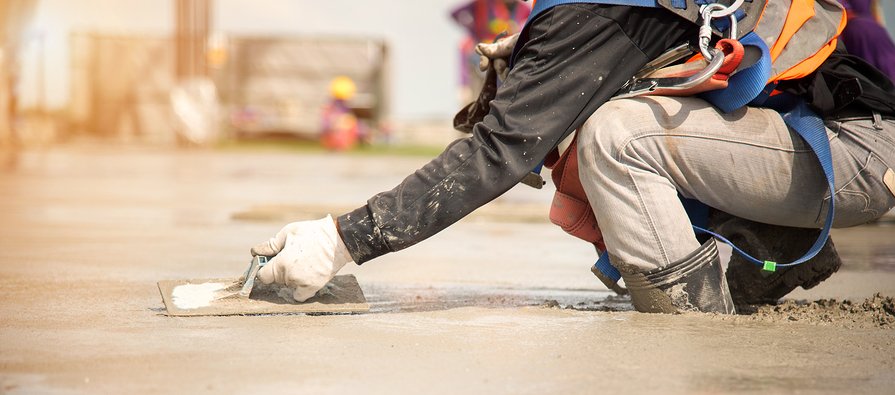We all work hard for a living, but for some people that means lifting, carrying, and other strenuous activities while on the job. But at least these kinds of jobs keep you physically active, right? So, if you’re engaged in a demanding position all day long, all this muscle use means you are benefitting your body, right? Unfortunately, new research suggests that is just not the case. In fact, physically strenuous jobs appear to be potentially more detrimental to health than jobs in which you are less active.
The study, which was conducted at VU University Medical Center in Amsterdam, The Netherlands, found that men in occupations involving manual labor may have a higher risk of earlier mortality.1 Coenen, Pieter; et al. “Do highly physically active workers die early? A systematic review with meta-analysis of data from 193,696 participants.” British Journal of Sports Medicine. 14 May 2018. Accessed 23 May 2018. http://bjsm.bmj.com/content/early/2018/04/17/bjsports-2017-098540. By examining the data collected during 17 earlier studies, the investigators focused their assessment on the effects of physical activity—either at work or outside of work—on health. The research evaluations took place all the way from 1960 through 2010 and included close to 194,000 male subjects.
The analysis showed that men in physically demanding jobs had an 18 percent greater risk of dying early than their peers employed in less strenuous occupations. Surprisingly, even engaging in forms of recreational exercise was not found to counter this higher mortality risk in physically active workers when the researchers controlled for leisure-time workouts.
There were certainly some flaws inherent in this study, including failing to take into account that some of the more physically demanding kinds of jobs considered could also potentially be dangerous, which could directly contribute to the early death rates seen. For example, miners, fishermen, metal workers, and construction workers are all employed in fields where there is a potential for harm or even death while on the job. We would certainly have to factor that in to some extent at least, particularly in the earlier years of the investigation when few if any workplace safety regulations existed.
It is also quite possible that some of the health issues leading to earlier death in the manual laborers have something to do with the fact that they generally earn lower wages and have fewer employment options than those with white collar positions. Also, dissatisfaction with your career for years can lead to depression and take a toll psychologically over time, as was found in a 2013 study at Mohaghegh Ardabili University in Iran.2 Nadinloyi, Karim Babayi; et al. “Relationship Between Job Satisfaction and Employees Mental Health.” Procedia – Social and Behavioral Sciences. 3 August 2013. Accessed 24 May 2018. http://www.sciencedirect.com/science/article/pii/S1877042813016212.
But whether the effects are due to physical exertion for long hours every day or the mental challenges it may produce or some combination of the two, the rise in mortality rates that was shown is enough to be concerning. Of course, we have heard in recent years that if your occupation causes you to spend most of your day sitting, you are putting your health at risk. Then, we were told that if you have to stand most of the day at work, you might be equally in jeopardy. Now we can add to that list health dangers to people with jobs that are more physically demanding.
So, what’s a person to do short of retiring from any and all forms of work at a young age? Obviously, most of us can’t afford to do that, so we’ve got to find other ways to make health a priority during our downtime. One important point regarding the current study is that exercising is typically very different than manual labor, which often involves repetitive movements that can produce muscle strain, and it’s hardly an even workout for all areas of the body—and most likely does not address one’s aerobic requirements.
Therefore, no matter what type of work you do, it is essential to make time every day to focus on a balanced program of exercise, be it prior to your workday, during your lunch break, or after work is over. Include a cardiovascular component to keep your heart strong, a strength component to tone your muscles, weight bearing to build muscle mass, resistance breathing to build lung capacity, balance training so you don’t lose the ability as you age, and a flexibility component to help you stay limber. A routine comprised of all these kinds of activity will keep you fit and is a great foundation for your overall healthy lifestyle.
References
| ↑1 | Coenen, Pieter; et al. “Do highly physically active workers die early? A systematic review with meta-analysis of data from 193,696 participants.” British Journal of Sports Medicine. 14 May 2018. Accessed 23 May 2018. http://bjsm.bmj.com/content/early/2018/04/17/bjsports-2017-098540. |
|---|---|
| ↑2 | Nadinloyi, Karim Babayi; et al. “Relationship Between Job Satisfaction and Employees Mental Health.” Procedia – Social and Behavioral Sciences. 3 August 2013. Accessed 24 May 2018. http://www.sciencedirect.com/science/article/pii/S1877042813016212. |












My sentiments exactly,
My sentiments exactly,
I for one can verify the attached comments, we are led to believe that we have to stay physically fit for health reasons eg; work, sports and of course work, work and more work. “Fear” and “Lack”play a huge role in what kinds of situations we end up living. we have to re-tune our minds and drag our dreams out of our imagination and make them reality.
I saw my grandfather for the
I saw my grandfather for the lest time in live when he was at age of 99, a real giant of 2.06 meter, working still daily in his coal distribution business, filling sacks with 45 Kg coal and put them on the delivery trucks.
He died at age 103 in a garden excident, walking with a lump of wood on his shoulders, on a slope land. Probally his is stumbled and the lump broke his neck, nobody knows exactly what was happend.
Who fits this story in relation with above story about physical labour?